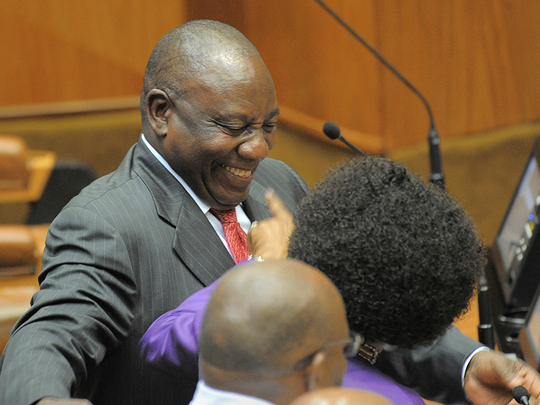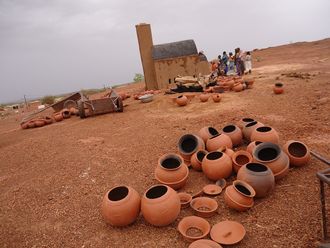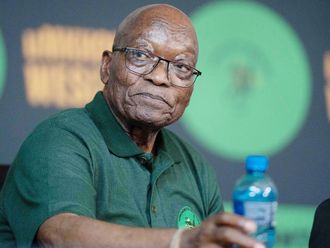
Johannesburg: South Africa’s next president faces a tough road in rebuilding investor confidence and reviving the economy in the wake of Jacob Zuma’s nine-year tenure that was marred by scandal, misrule and policy missteps.
Zuma resigned Wednesday night, almost two months after he was replaced as head of the ruling African National Congress by Deputy President Cyril Ramaphosa, who’ll likely became the nation’s leader when parliament elects a new president on Thursday.
These are some of the biggest challenges that will confront Zuma’s successor:
1. Tackling corruption
Investigations by the nation’s graft ombudsman and Auditor-General found that graft is endemic in the state, with tens of billions of rand stolen or squandered each year. Zuma appointees head almost all the law-enforcement agencies, which have been slow or loathe to act against some of his closest allies who’ve been implicated in the free-for-all. The new president will need to replace several key officials, reassert confidence in the independence and integrity of the criminal prosecution system and show that the government is intent on ensuring all those found guilty of corruption are held accountable.
2. State-owned companies in chaos
The looting spree largely targeted state companies, especially power utility Eskom Holdings SOC Ltd., which is at risk of running out of cash. While Ramaphosa has already overseen the appointment of a new board at Eskom, it still needs to appoint a permanent chief executive officer, fill several other top management posts and urgently raise new funding. South African Airways and oil and gas company PetroSA Ltd. are among the other entities that have been hobbled by a lack of leadership and oversight.
3. Reigniting growth
While the government’s National Development Plan says an average 5.4 per cent economic growth rate is needed to meet its goal of slashing a 27 per cent unemployment rate, the central bank anticipates an expansion of just 1.4 per cent this year and 1.6 per cent in 2019. Greater policy certainty would go a long way toward boosting business confidence and investment in the economy. That is especially true for the mining industry, which accounts for half of South Africa’s exports and has been at loggerheads with the government for years over black ownership laws.
4. Warding off further credit rating downgrades
S&P Global Ratings and Fitch Ratings Ltd. cut the country’s debt to junk in 2017 after Zuma fired the respected Pravin Gordhan as his finance minister. Moody’s Investors Service put the nation on review for a downgrade in November, and is due to deliver its assessment in March. Another reduction of the local-currency bond rating to junk would trigger an exclusion of South Africa’s rand debt from Citigroup Inc.’s World Government Bond Index and spark a sell-off by investors tracking the gauge. Avoiding that prospect will require the new administration to show its commitment to tackling corruption, bolstering growth and sticking to its expenditure ceiling and budget deficit-reduction plans.
5. Finding money to fund free tertiary education
Shortly before he was replaced as ANC leader, Zuma announced that tertiary education for students from homes where the combined annual income is less than 350,000 rand ($29,880) would be fully subsidised. While the ruling party endorsed the plan, there’s no budget for it, and his successor will have to come up with ways to find the cash, which may mean unpopular spending cuts and tax increases.
—Bloomberg












